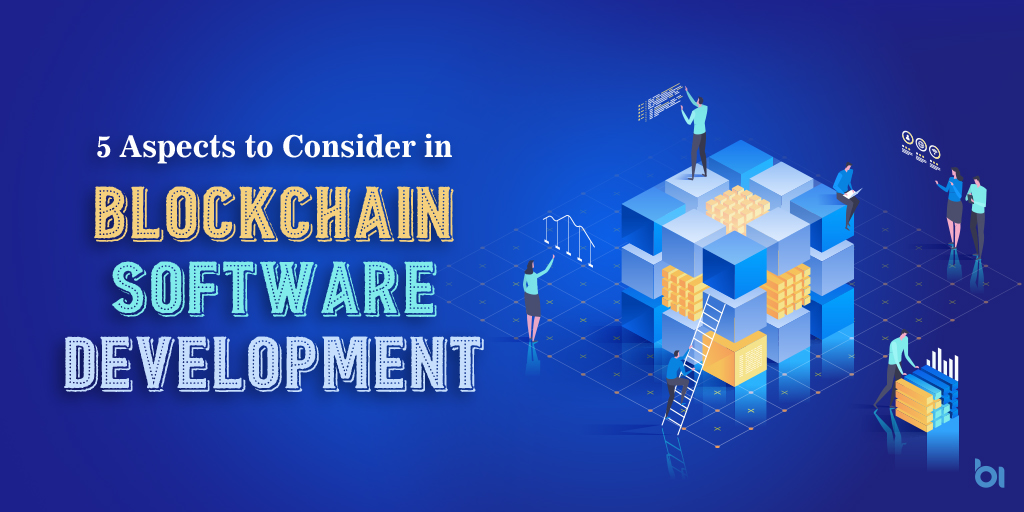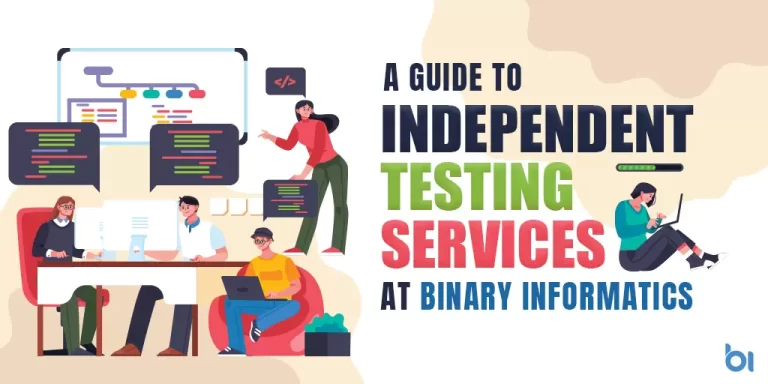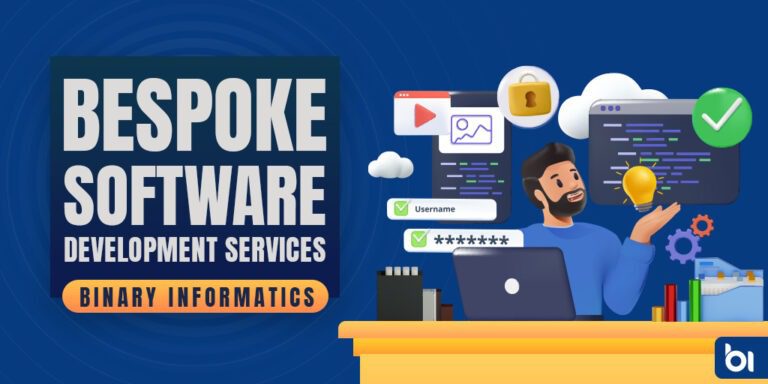These five aspects are the nature of blockchain mentioned below:
- Blockchain Technology
- Distributed nature of blockchain
- Decentralized nature of blockchain
- Blockchain Interoperability
- Blockchain software development strategies
Table of Contents
ToggleLet’s have a look at 5 Aspects to consider in Blockchain Software Development
1. Blockchain Technology
Blockchain technology is defined by the Internet protocol. So, all we have to consider when blockchain technology is discussed is the fundamental protocol and not the applications which use it. Blockchain technology is a decentralized database technology where all activities are recorded and verified with digital signatures.
This makes it a distributed database technology, which uses blockchain technology to achieve decentralization. The blockchain network operates as a distributed ledger, meaning that it is an open ledger where any valid user can edit the record. This record cannot be altered or deleted by any single entity.
The blockchain network is peer-to-peer in nature. As such, no individual node can be trusted. Each node requires sufficient information to identify itself before it can become a peer in the network.
The blockchain ledger is made up of blocks of transactions, which have their own identifiers. These blocks, in turn, have an immutable digital signature, which prevents alteration or removal of any records or the data within.
The blockchain transaction is represented by a hash. The hash is made up of the transaction signature, the digital signature, the serial number of the digital signature, and the identifier of the transaction.
For example, let us assume that we have a transaction to make a payment. The transaction will be represented by three blocks. First, we will see the signature for the transaction.
This signature has the unique identity that is associated with the transaction. The second block contains the transaction serial number. The third block contains the identifier of the transaction.
The distributed nature of blockchain technology makes it different from traditional database technology. In traditional databases, all nodes can be trusted. In the blockchain, however, the nodes are not trusted, which is why blockchain is referred to as a distributed ledger.
A distributed ledger can be trusted only when it is a public ledger. So, the ledger can only be distributed in a public, centralized manner. However, it is still distributed and not centralized.
That is why the ledger cannot be centralized. But this implies that there will be many nodes involved in the transaction and thus the number of transactions will increase as the system is growing.
Blockchain is a secure database system, which is one of its most important properties. But, at the same time, it can’t be changed by any user. The blockchain technology works on immutable cryptography.
All records have a digital signature to identify the user and the transaction. A digital signature is based on public key technology. This allows two different users to digitally sign the same transaction without conflicting.
Read Also: How To Pick The Right Blockchain Platform For Your Business Use Case
2. Distributed & Decentralized Nature
Every node or ledger of a blockchain system maintains a copy of the transaction and records. This implies that there are multiple copies of the data in the blockchain system. But, in order to be a peer in the network, a node has to maintain a complete copy of the data and its history.
The blockchain network can only function if all nodes are participating, which means that they all need to agree on the record before they all move forward in updating it. This makes the system completely decentralized.
Blockchain network is peer-to-peer in nature. This means that every node has to verify the data or transactions in the network before moving ahead.
The blockchain technology also does not support an authentication system and the users have to provide their details and their authentication. This makes the network completely peer-to-peer. This also implies that no node can be trusted, and so, there is no central control of the system.
3. Interoperability
The basic nature of blockchain technology is interoperability. This implies that any blockchain system, be it private or public, will work on blockchain technology. This interoperability means that two or more blockchain systems will work on any blockchain technology.
If a private blockchain works on blockchain technology, it will also work on public blockchain technology. Similarly, if a private blockchain is using consensus algorithms, a public blockchain will use those consensus algorithms as well. The interoperability, in essence, makes blockchain technology usable.
A blockchain network is completely decentralized. Each node will be independent and autonomous in its operation. Each node will have its own copy of the ledger and will be managing its own copy of the ledger.
The ledger will be distributed throughout all nodes of the network. So, in order for a blockchain network to function, all nodes need to interact and cooperate with each other.
Every blockchain network has a consensus algorithm, which defines how transactions and blocks are verified, stored, and validated. Any blockchain system has to use a consensus algorithm before it can be implemented in the system.
The consensus algorithm decides which nodes are allowed to be a peer in the network and also decides whether transactions are validated.
Read Also: The Ultimate Guide to Custom Blockchain Solution
4. Decentralized Development
Blockchain systems do not have a central point of control. The nodes that are running the network are decentralized. In the case of blockchain systems, all operations are controlled and carried out by the nodes of the network.
In addition, blockchain technology does not have a single administrator, meaning there is no single individual who controls the network.
There are many nodes and they all have their own copies of the ledger, which means there are multiple independent entities and nodes. This makes blockchain technology very different from the traditional centralized and traditional software development.
The decentralized nature of blockchain systems implies that there is no central control point to take decisions or to approve modifications. The entire process of decision-making is also decentralized.
This means that the system is controlled by the nodes who are making the decisions. They are the controllers of the entire process. The entire process is carried out only by the nodes in the blockchain network. The nodes do not allow any central control system to dictate decisions.
The nodes themselves are independent of each other, which means that they do not communicate with each other or work in a centralized manner. This is the reason that blockchain systems are completely decentralized.
There is no one person who has complete control of the system. This makes the blockchain technology very different from the conventional software development.
In blockchain technology, there is no central authority and the nodes are independent of each other. So, there is no single administrator who can authorize the changes or make decisions for the network. It is the nodes themselves who are operating and have the authority to decide what should happen in the network.
Read Also: How to Choose The Best Blockchain Development Platform?
5. Blockchain Software Development Strategies
Blockchain technology is completely different from conventional software. This difference is not only at the protocol level but also at the development level.
For example, how we develop a blockchain network is very different from how we develop conventional databases. This is the reason that every project has to have its own development strategy. In addition, the development strategy has to be tailored according to the nature of blockchain system.
Blockchain software development is also different from traditional software development. It is important to understand that traditional databases have central administration.
So, we can expect traditional software to have centralized development where there is a single development team with a single developer for each aspect of the system. This is not the case for blockchain.
We will always have many people operating in a blockchain system. Every node has to manage its copy of the ledger and will have its own developer. The number of nodes in a network will be growing in the future and this implies that there will be multiple developers working on multiple areas of the system.
Therefore, blockchain software development will be a decentralized and distributed development. This is because a node can be controlled by multiple people.
For example, it can be controlled by one or two people at a time. Multiple people can control a single node. And, this also implies that every node can be independent. That is why the nodes will be developed by multiple people with different responsibilities.
Also, in blockchain development, there are multiple stakeholders. This implies that each node will have a different perspective of the system. There is no single developer who will be overseeing every aspect of the project. There will be many stakeholders with different development responsibilities.
Each team or stakeholder has a different role in the development of the network. But these stakeholders must work together in a distributed and decentralized manner. This means that each node should not be controlled by a single person.
As blockchain technology is going to be widely adopted in the coming years, it is expected that it will be standardized. The developers will have to use standardized protocols to develop nodes.
These standardized protocols and their components will have to be documented and made public in order to make it easy to build the nodes. The nodes will be compatible with the components of standardized protocol in the same way that they are compatible with the existing nodes. This will allow developers to build nodes using standardized protocols.
Blockchain App Development
When it comes to Blockchain development, nothing compares to Blockchain application development. Blockchain apps are a great way to connect directly with users by offering easy-to-use Blockchain solutions.
To get the most out of your Blockchain application development, look for a Blockchain development company with the right qualifications.
Building a Blockchain application is not something that can be easily delegated to just anyone. Blockchain software development is not rocket science, but creating an application that uses Blockchain technology requires the right skills and expertise.
Top Blockchain Development Company in USA
Ending Note
Blockchain is one of the best innovative and disruptive technologies that we have seen in the past few years. It is expected to be a major disruptive technology in the coming years, as more and more companies are adopting it for their business.
It is the first major disruptive technology that has the potential to change the way companies develop software. So, it is very important to understand how blockchain works.
We have understood how blockchain works and what it is in the earlier part of this article. So, now we have an idea about how blockchain works. But there is much more that we do not know about how blockchain works.
I hope that the reader will find the information in this article helpful and interesting. This is just the first of the two articles we are going to publish on blockchain technology. So, stay tuned for more articles about blockchain technology!




